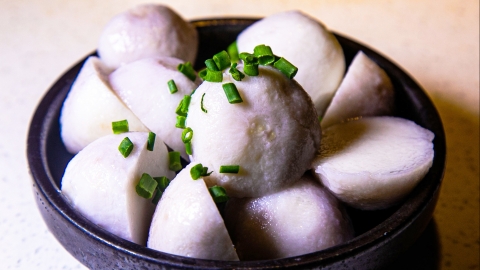Can taro be eaten if it has yellow spots after peeling?
Generally speaking, whether taro with yellow spots after peeling is edible depends on the nature of the spots and the overall condition of the taro. If in doubt, it's best to avoid eating it. The specific analysis is as follows:

If the yellow spots are caused by oxidation due to exposure to air after peeling, or are naturally occurring small, light-colored specks, and if the taro remains firm with no signs of softness or decay, and has no musty, sour, or other unpleasant odors, it is generally safe to eat. In such cases, simply cut away the yellow spots completely, wash the remaining portion thoroughly, and cook as usual—this will not adversely affect health.
However, if the yellow spots are caused by mold growth, especially when accompanied by localized softening, stickiness, or a musty or rotten smell, the taro should not be consumed. These yellow spots indicate fungal proliferation, which may have penetrated deep into the taro. Even if the surface spots are removed, harmful substances may still remain inside. Consuming such taro may cause gastrointestinal discomfort, including symptoms like abdominal pain and vomiting.
When handling taro, carefully examine the appearance of the yellow spots and the overall condition of the tuber. Only prepare and consume it after confirming there are no abnormalities. If you're uncertain about the nature of the spots or notice any suspicious signs, for safety reasons, it's recommended to discard the taro rather than risk consumption and potentially harm your health.




